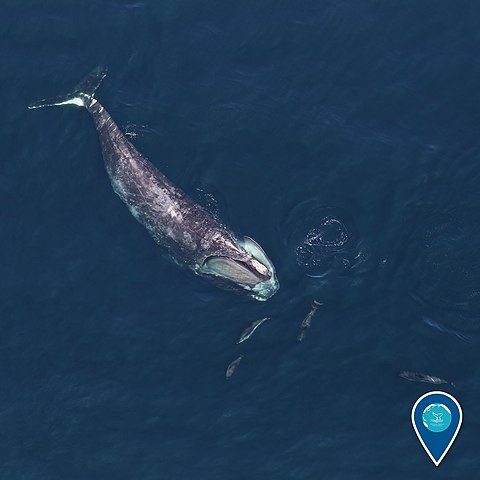
(Photo: Wikimedia Commons/NOAA Gray's Reef NMS)
There have been numerous cases of whale and ship collisions that led to the death of the cetaceans. To solve this problem, a new technology has been developed to reduce the rate of whale deaths from such violent encounters.
Whale Safe Technology
Two years after the number of whales killed in collisions in California hit a record 14, Whale Safe was introduced in 2020. According to Benioff Ocean Science Laboratory scientist Callie Leiphardt, for every whale that is found dead, 10 more are believed to have perished unreported. The fact that so many people were dying despite voluntary speed limitations indicated the necessity for stronger actions.
The researchers reasoned that they might improve compliance and reduce mortality by warning ships about whales and publicizing the maritime companies that disregarded the speed limit.
Their strategy is based on deploying microphone-equipped buoys to listen for whale sounds underwater and distinguish low-frequency whale calls from background noise from the ocean. Sightings, model-based projections, and verified detections are transmitted into Whale Safe's alert mechanism to instruct neighboring skippers to reduce speed. Using a widely used GPS monitoring technology, the team tracks the ships' speeds within designated slow zones and assigns parent businesses online marks ranging from A to F. After expanding to the East Coast this week, Whale Safe will now evaluate businesses in North America's slow-speed zones.
Prior to this technology, three North Atlantic right whales died within a week. This was alarming because the whale is listed as endangered, with only 360 individuals remaining.
Most of the deaths were due to human activities, including ship collisions. Up to 20,000 whales are killed annually due to ship collisions, which pose a threat to whale populations globally. The issue will worsen because ocean traffic is predicted to increase by at least 240% by 2050.
Collisions in California have been declining since Whale Safe was launched. In 2022, only four documented incidents were down from 11 in the previous year. The percentage of ships slowing down has also increased in the collision-prone area—the Santa Barbara channel—from 46% in 2019 to 63.5% in 2023.
California's strike-prevention program increased operations throughout North American waterways on April 11, and other nations are following suit.
ALSO READ: 2 Male Blue Whales Caught Competing for the Female's Affection in Rare Mating Ritual
North Atlantic Right Whale
The North Atlantic right whale is one of the world's most endangered large whale species. They can grow up to 52 feet and weigh up to 140,000 pounds.
There are two more species of right whales: the Southern right whale, which lives in the southern hemisphere, and the North Pacific right whale, which lives in the North Pacific Ocean. As baleen whales, right whales filter large amounts of ocean water through their baleen plates, which function as a sieve, to feed on copepods (microscopic crustaceans).
By the early 1890s, commercial whalers had driven North Atlantic right whales to the verge of extinction. Since 1970, they have been protected as endangered under the Endangered Species Act. There are about 360 individuals left, with less than 70 females actively reproducing.
Human activities threaten the continued existence of this species. Also, the quantity of calves born in the past few years has been below average.
RELATED ARTICLE: Prehistoric Alligator-Like Fish Washed Up Ashore in Singapore 10,000 Miles Away From Its Native Home
Check out more news and information on Animals in Science Times.














